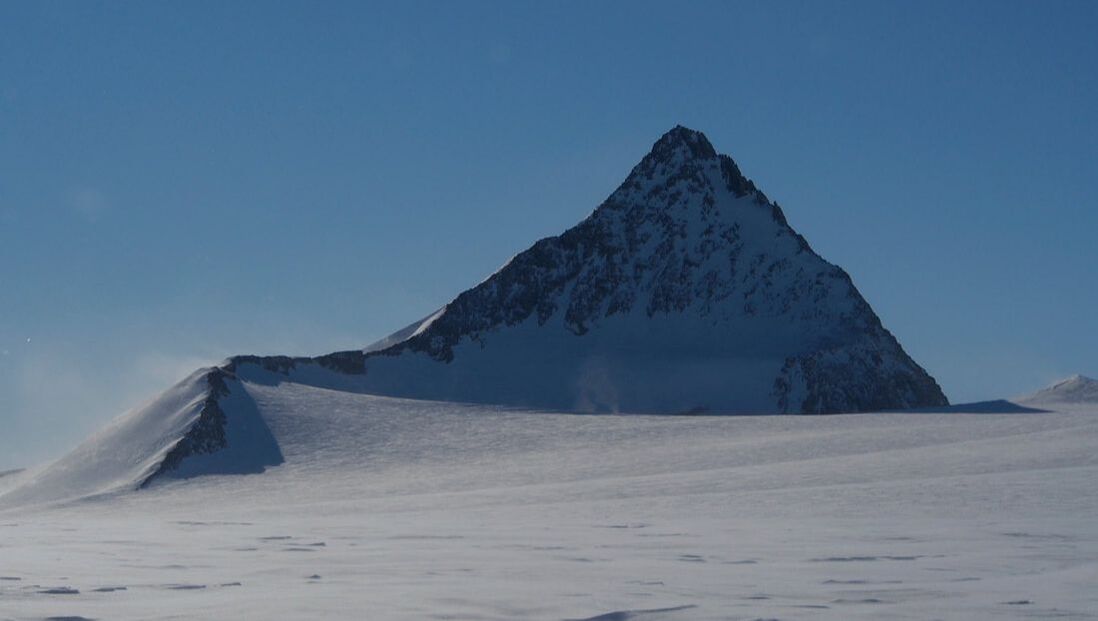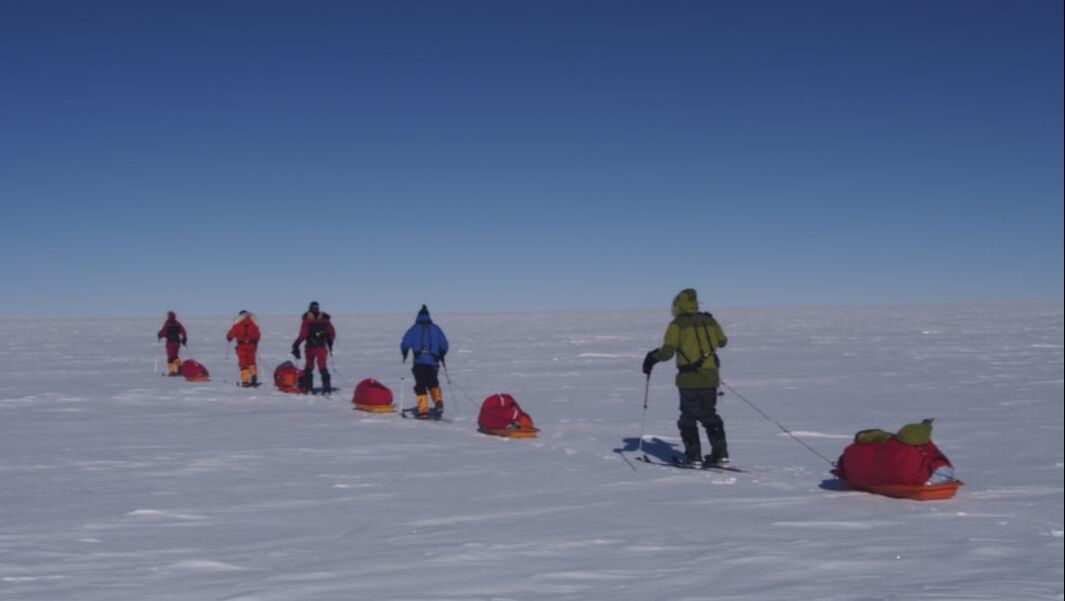All expeditions run by Antarctic Logistics & Expeditions
Climb AntarcticaHave you ever wondered what it would be like to be first? The first to stand on top of an unnamed peak or the first to climb a new route that has never been climbed before? Have you ever imagined doing these things in the most remote and pristine place on planet Earth? Welcome to ANI’s Climb Antarctica!
Climb Antarctica is a mountaineer's dream. Explore the amazing, untouched alpine terrain of the Heritage Range, cradled within the Ellsworth Mountains. Steep ice couloirs, classic ridge traverses, icy crests, rock pyramids and hidden valleys – the Heritage Range has it all. Whatever your level of experience or grade, there is something here for you. Over the last couple of seasons there has been a flurry of activity and our guests have made some amazing first ascents – Mount Dolence, Linder Peak, the north face of Mount Rossman, and Mount Sporli, the highest peak in the range. Even so, many peaks remain to be climbed and many valleys still await their first human footprint. With new routes, stunning scenery and unlimited climbing potential it is no coincidence that Climb Antarctica is our ANI Guides’ favorite trip! |
Mt Vinson, AntarcticaImagine yourself on the summit of Mount Vinson, at 16,050 ft (4892m) the highest peak in Antarctica and one of the coveted Seven Summits. Before you the world falls away pristine and untrammelled. Majestic, snow-covered peaks stand guard over vast glaciers below and, in the distance, snow meets sky along a noticeably curved horizon.
To climb Mount Vinson is to challenge yourself on a mountain like no other and to stand atop Antarctica, the least explored continent on Earth. We ascend the Standard Route climbing gentle glaciers, 45° snow slopes, an exposed high plateau and spectacular summit ridge. The rate of ascent and daily climbing plan set by your experienced mountain guide will be geared toward the safety and success of your climb. At the summit the fierce winds, biting cold, storms and delays provide a backdrop that only highlights the vast beauty before you and the sense of accomplishment that comes from achieving the extraordinary. |
South Pole, Last Degree, AntarcticaSki 60 nautical miles and reach the South Pole through your own efforts and the support of your team. Complete this polar challenge to stand at the most southerly point on Earth! The essence of polar exploration is captured in this incredible two-week, expedition style trip. Experience first-hand the challenges faced by early explorers as you journey by ski across the vast Antarctic landscape that is at the same time harsh, unforgiving and unimaginably beautiful.
Ski Last Degree is the ideal choice for those who want the serious challenge of a polar expedition but do not have the time or resources to commit to a full-length expedition from the coast. The journey begins at 89° South, where you are dropped by ski aircraft. You travel by ski and with sleds the last 60 nautical miles (111km) to the most southerly point on Earth – the Geographic South Pole. |
Ski South Pole, AntarcticaEmbark on an endeavor that will test your strength, endurance and resolve to their limit. Ski South Pole is the ultimate challenge, a journey that spans an entire Antarctic season and traverses 730 miles (1170 km) from Hercules Inlet, on the edge of the frozen Antarctic continent, to the Geographic South Pole. Travel by ski hauling all your supplies, facing constant winds, fields of sastrugi and white-out conditions.
The route for ‘Ski South Pole all the Way’ starts at Hercules Inlet on the Antarctic coast and climbs gradually to more than 9300 ft (2800 m) as the you make your way south over the ice cap’s mountain passes and wind blown snow ridges. Days are filled with 24-hour daylight and an intense solitude and tranquility; no plant or animal life is seen this far south, just snow, ice, rock and sky. The trip takes 50-60 days depending on weather, snow conditions and group strength. During the expedition you will ski for 7-9 hours a day in all types of weather and in challenging terrain, hauling a sled weighing 110-130 lbs (50-60 kg). |



